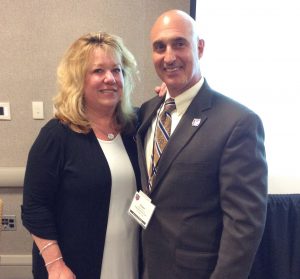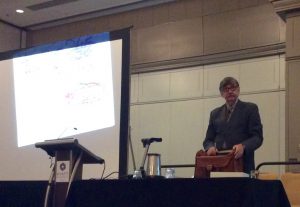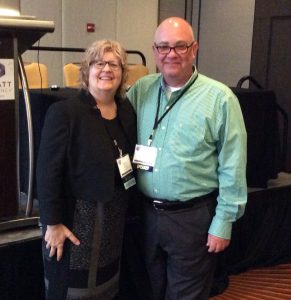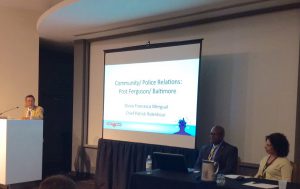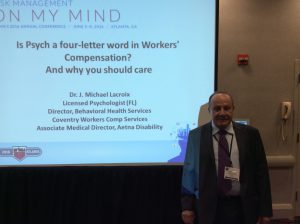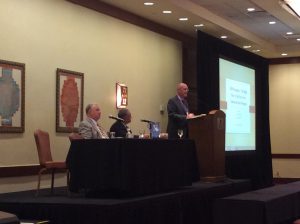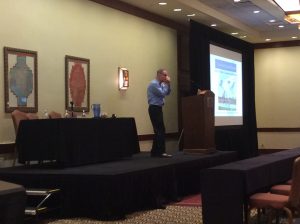Creating Sustainable Results with Workers’ Compensation Metrics
At the 2016 PRIMA Annual Conference, Frank Altiere from PMA Management Corp and Lori Gray from Prince William County, VA discussed how using data effectively is vital to improving your program and proving its value. In workers’ compensation you can significantly impact your results and metrics are the key to doing so. They can help gain buy-in for change and new programs from senior management, provides performance triggers to intervene, and prevent claims and save lives. Using data effectively involves the following steps: What are my workers’ compensation risk issues? Ten years ago we were not focused on the aging
(Read the full article…)
Police Body Cameras: The Future is Now
The presenters for this 2016 PRIMA session were Richard A. Spiers, CPCU, ARM, Are, Genesis Management and Insurance Services and Attorney Samuel C. Hall, Jr., Crivello Carlson, S.C. Currently, over 3,500 law enforcement departments use police body cameras and that number is expected to more than double over the next five years. Body cameras can have may benefits as well as risks. Many agencies using body cameras do not have adequate policies and practices in place. Do Body Cameras Change Behavior? While empirical research is just beginning in this area, initial findings suggest a connection between the use of body
(Read the full article…)
Creating Controls for Five Root Organizational Risks
Police officers, firefighters and emergency medical services personnel continue to get in trouble for the same things over and over again. This ‘trouble’ does not just impact them as employees, but also the employer and the management in a public entity. In this session at the PRIMA 2016 Annual Conference, Gordon Graham from Lexipol, LLC, demonstrated five categories that serve as the root of risk control problems and activities within them that can be fine tuned to improve existing policies and prevent problems. According to Graham, “In order to be successful, you must first get and keep good PEOPLE, derive
(Read the full article…)
The Whole Enchilada: Comprehensive School Climate Change
This PRIMA 2016 session was presented by William Grace Frost, Director of Strategic Relations, Community Matters. Community Matters is a national leader in student‐centered school safety programs and school climate improvement since 2000 Founders of the evidence‐based Safe School Ambassadors Program implemented in over 2,000 schools nationwide and in Canada, Puerto Rico and Japan. The intent of this session was to provide a school climate improvement framework and assessment process, designed to implement an effective and sustainable risk reduction strategy. To do this, one must think outside of the box. Bullying and cyber bullying are becoming more prevalent, much more
(Read the full article…)
Selling Your Risk Management Program
At PRIMA 2016, a session discussed why it is important that risk managers are among the best marketing and sales professionals. The speakers were Zachary Gifford from California State University and Cindy Parker with Sedgwick. Programs are only as effective as the willingness of employees to follow them. Risk managers must persuade people to wear safety goggles, wipe up spills on the floor and use proper lifting techniques. Should an accident occur, risk managers must be able to convince employees to report incidents immediately, explain why treatment from a company doctor is preferred and encourage a safe and speedy return
(Read the full article…)
Community Relations in the Post-Ferguson World
Communities rely on police departments to ‘protect and serve’ and the police, in turn, rely on community support and cooperation – but the relationship is not always harmonious. Police/resident tensions, heightened by cultural differences and media attention, have led to distrust and anger in both urban and local municipalities alike. Through community-wide dialogues, police and residents have used their shared insights to dramatically improve relationships. This session at the PRIMA 2016 Annual Conference outlined a new approach that police departments can take to enhance community engagement. Presenters included: Gloria Francesca Mengual, The National Coalition for Dialogue & Deliberation Patrick Ridenhour,
(Read the full article…)
Is Psych a 4-Letter Word in Workers’ Compensation?
At the 2016 PRIMA Annual Conference, Dr Michael Lacroix, Director of Behavioral Health Services with Coventry Workers’ Comp Services, presented a session examining questions on the presence, role and the impact of psychological factors on the susceptibility to, the reaction to and the recovery from workers’ compensation injuries. Back in 1977 a study published by Engel talked about the bio-psycho-social model of disease and that these factors were something that needed to be considered when evaluating patients. This study was ahead of its time and was not widely accepted at the time it was published. Over time, this study has
(Read the full article…)
PRIMA 2016 Annual Conference
Conference Chronicles will be blogging from sessions at PRIMA’s 2016 Annual Conference on June 5-8, 2016, in Atlanta, GA. The PRIMA 2016 Annual Conference will offer more than 55 educational opportunities covering the latest trends and topics affecting public risk management today, including risk control and safety, risk financing, schools, enterprise risk management and employee benefits. Learn more about PRIMA’s 2016 Annual Conference here.
ADR Programs
At the 2016 SIIA Workers’ Compensation Executive Forum, Jack Frazier from American Global and former workers’ compensation judge Steve Siemers discussed how Alternative Dispute Resolution can enhance a workers’ compensation program. Ten states currently allow employers to collectively bargain a carve-out ADR process for their workers’ compensation programs. New York and California are two of the states. This is most often seen in the construction industry but in California any employer with a collective bargaining agreement can do a carve-out ADR. Some examples of non-construction employers with carve-outs in California are City of Long Beach and Safeway stores. It is important
(Read the full article…)
Emotional Recovery after Catastrophic Injury
At the 2016 SIIA Workers’ Compensation Executive Forum, Jon Pearson from QLI kicked of the session with some blues harmonica then talked about how the best long-term outcomes on catastrophic claims can be achieved by considering the emotional challenges faced by the injured worker. Emotional recovery means the injured worker believes they can live a rich and fulfilling life in spite of their pain and physical limitations. If an injured worker does not believe in themselves and focuses on the negatives, then ultimately they will never have the best outcomes. This emotional recovery must be the lead focus of any
(Read the full article…)

